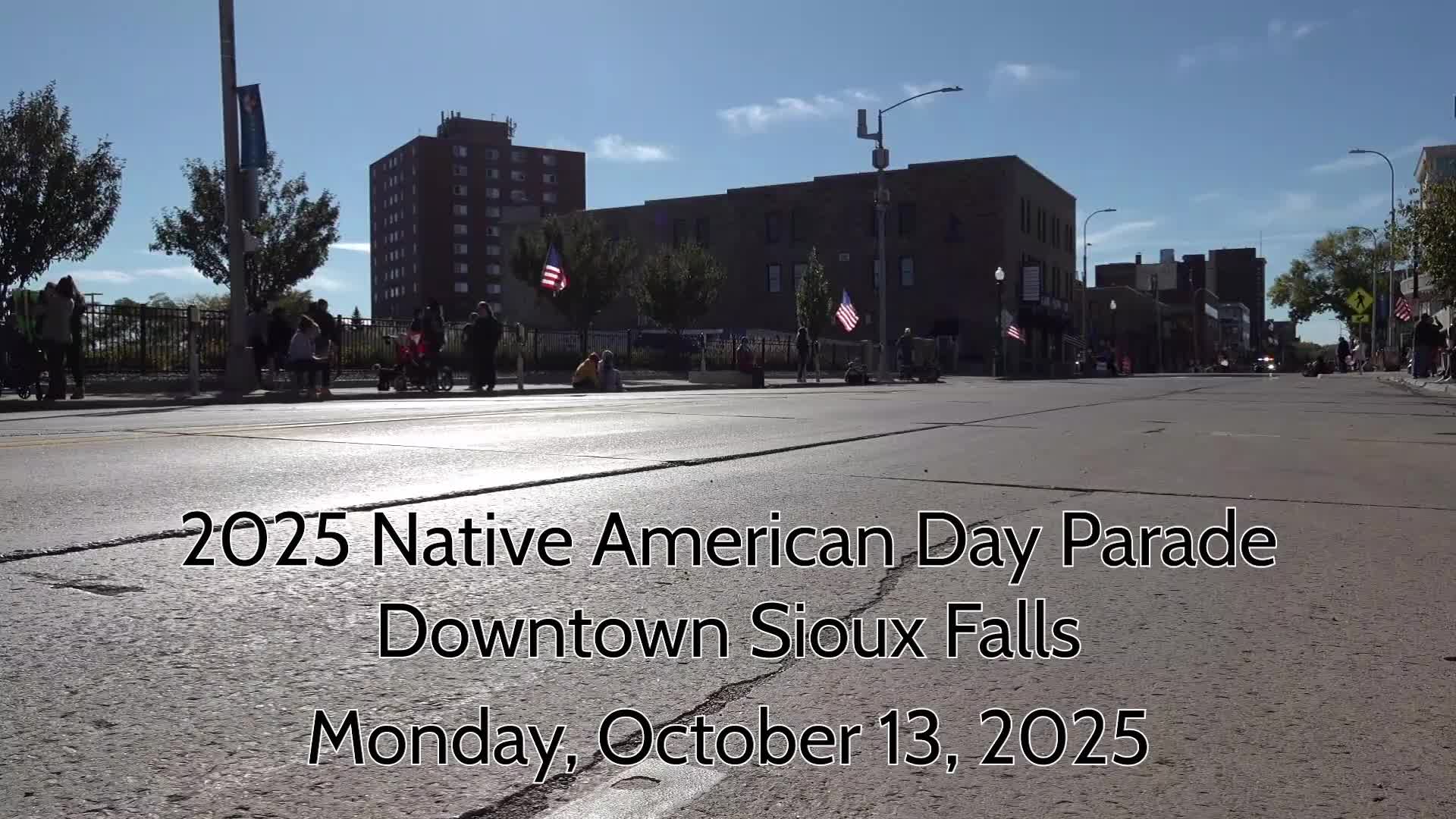Eighth annual Native American Day parade spotlights culture, community services in Sioux Falls
October 13, 2025 | Sioux Falls School District 49-5, School Districts, South Dakota
This article was created by AI summarizing key points discussed. AI makes mistakes, so for full details and context, please refer to the video of the full meeting. Please report any errors so we can fix them. Report an error »

The eighth annual Native American Day parade took place in Sioux Falls, South Dakota, featuring cultural groups, school clubs and community service providers, organizers said.
Organizers used the event to highlight traditional culture and community supports and to draw attention to local services. Emcee/announcer remarks emphasized cultural values and the parade’s role as “good medicine” for the community, while groups promoted recovery services, legal help and employment opportunities.
Dale Lee served as the parade’s grand marshal. Lee is a psychologist with Sioux Falls School District 49-5 who — according to the parade announcement — has worked in the district for about 18 years and has provided psychological assessments for Native American students on reservations across the state. Parade remarks noted Lee’s longtime work at Hawthorne Elementary and Anne Sullivan Elementary and said he was honored to receive the recognition.
The parade featured floats and school groups including Jefferson High School, Washington High School and references to area tribal and community organizations such as the Sioux Falls Two‑Spirit Society and Marty Indian School. An on-site announcer invited applause for veterans and for community groups as they passed.
Community service and outreach were part of the event. An announcer said Dakota Plains Recovery and other recovery-oriented groups were present and noted a “justice bus” mobile legal office. The emcee also announced a local employer seeking school bus drivers and gave pay and contact details: “starting pay is $23.40,” and the employer offered a “$2,000 sign on bonus,” with a phone number and website mentioned during the parade.
A political appearance was noted when Julian Baldwin, identified in the announcement as running for U.S. Senate and associated with the Minnehaha County Democratic Party, was introduced from the parade route.
Organizers closed the parade announcements by directing attendees to a community meal at Calvary Church. The emcee thanked participants and reminded the crowd of the event’s role in bringing people and services together.
The parade was presented as a cultural celebration and an opportunity for community outreach rather than a forum for policy decisions or formal actions.
Organizers used the event to highlight traditional culture and community supports and to draw attention to local services. Emcee/announcer remarks emphasized cultural values and the parade’s role as “good medicine” for the community, while groups promoted recovery services, legal help and employment opportunities.
Dale Lee served as the parade’s grand marshal. Lee is a psychologist with Sioux Falls School District 49-5 who — according to the parade announcement — has worked in the district for about 18 years and has provided psychological assessments for Native American students on reservations across the state. Parade remarks noted Lee’s longtime work at Hawthorne Elementary and Anne Sullivan Elementary and said he was honored to receive the recognition.
The parade featured floats and school groups including Jefferson High School, Washington High School and references to area tribal and community organizations such as the Sioux Falls Two‑Spirit Society and Marty Indian School. An on-site announcer invited applause for veterans and for community groups as they passed.
Community service and outreach were part of the event. An announcer said Dakota Plains Recovery and other recovery-oriented groups were present and noted a “justice bus” mobile legal office. The emcee also announced a local employer seeking school bus drivers and gave pay and contact details: “starting pay is $23.40,” and the employer offered a “$2,000 sign on bonus,” with a phone number and website mentioned during the parade.
A political appearance was noted when Julian Baldwin, identified in the announcement as running for U.S. Senate and associated with the Minnehaha County Democratic Party, was introduced from the parade route.
Organizers closed the parade announcements by directing attendees to a community meal at Calvary Church. The emcee thanked participants and reminded the crowd of the event’s role in bringing people and services together.
The parade was presented as a cultural celebration and an opportunity for community outreach rather than a forum for policy decisions or formal actions.
View the Full Meeting & All Its Details
This article offers just a summary. Unlock complete video, transcripts, and insights as a Founder Member.
✓
Watch full, unedited meeting videos
✓
Search every word spoken in unlimited transcripts
✓
AI summaries & real-time alerts (all government levels)
✓
Permanent access to expanding government content
30-day money-back guarantee
